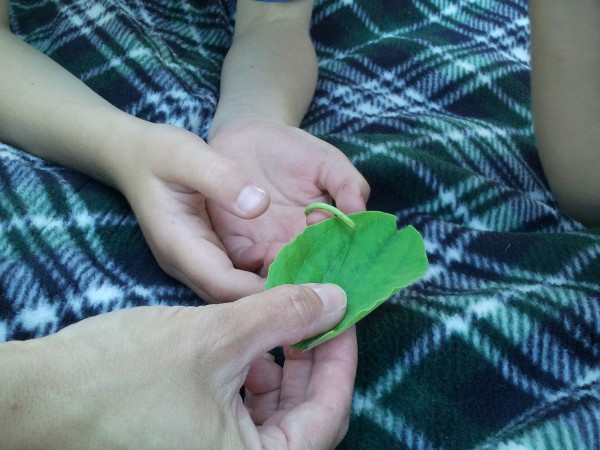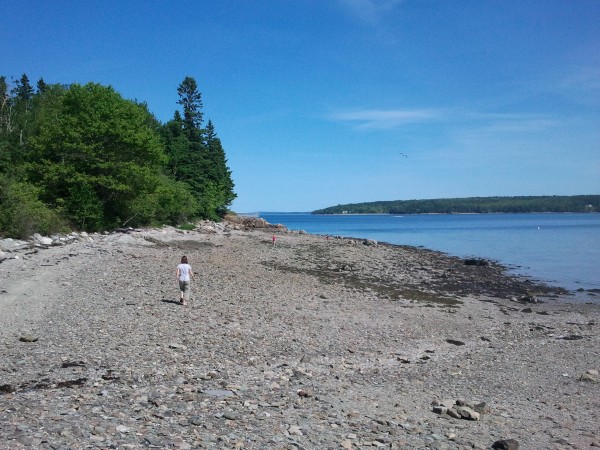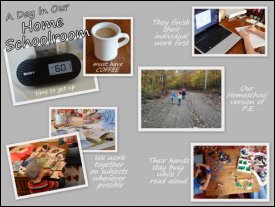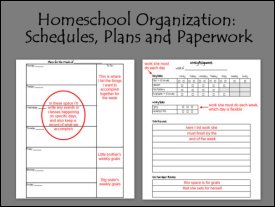Last Child in the Woods ~ Stepping Back
I’m continuing on in the book study on Last Child in the Woods by Richard Louv hosted by Nicole of Journey to Excellence. Be sure to click over and read her thoughts on Chapters 12, 13 and 14. We’re getting to the part of the book with ideas on reuniting your child with nature.
The main thought to hit me during Chapter 12 came when the author stated that we should strive to make the experience in nature as unorganized as possible while still meaningful. I am a list-making lesson-planning micro-manager, so I have to fight my personality here. The message came again in a quote from E.O. Wilson: “Hands-on experience at the critical time, not systematic knowledge, is what counts in the making of a naturalist.” Ouch. Then in two different posts Barb (from Harmony Art Mom) used these quotes from Charlotte Mason:
Children are quick. In fifteen minutes, they will have finished with their sight-seeing exercise or imaginary picture painting. Other than that, an occasional discovery that the mother shows them with a name and maybe a dozen words about it at just the right time are all that’s needed; the children will have formed an interest in something they can continue on their own. Just one or two of these discoveries should happen in any given day.” Charlotte Mason, volume 6 page 78
They must be left to themselves for a good part of the day to take in their own impressions of nature’s beauty. There’s nothing worse than children being deprived of every moment to wonder and dream within their own minds because teachers and adults are constantly talking at them, not leaving them a moment’s peace. Yet, the mother must not miss this opportunity of being outdoors to train the children to have seeing eyes, hearing ears and seeds of truth deposited into their minds to grow and blossom on their own in the secret chambers of their imaginations.” Charlotte Mason, volume 1 page 44
I adore nature study and it is a highlight of for all of us, but I need to beware of making every moment in nature an official study and thereby not giving my children a moment’s peace to enjoy and experience nature for themselves. I like the description: a dozen words at just the right time.

Chapter 13 reiterates the message: don’t make time in nature a chore or another “Fine Educational Opportunity” (love the terms!). There are many ideas in this chapter to connect your kids with nature, beginning with connecting yourself with nature and letting your enjoyment be contagious. Among the many ideas for great activities to do with your kids (the with is important) he talks about making walks a mutual adventure, not a forced march. Here I’m guilty again, at least at times. Believe it or not, I may have been better about some of this before I was homeschooling. When I wasn’t trying to teach them everything under the sun all the while having a way to show that they learned it I was a little (okay, a lot) more relaxed with our time. The good news for me: after reading this book we have been getting outside more already, and through homeschooling and nature study I’m reconnecting with nature. Nature study has rekindled my interest and excitement about the natural world. As I enjoy learning all I can, I need to remember my children’s ages and Charlotte Mason’s edict: just a dozen words to them, not unloading all the fascinating information I’ve read. I have a lot more work to do on my approach, but I am happy for the curiosity and excitement I see in my kids. As we sat at a lake this week my son kept bringing things to me that he thought were exciting (water lily flowers and seed pods, various dead insects) and he knew I’d be excited to see them, too.
Chapter 14, entitled “Scared Smart” dealt with parents’ fears about kids being out in nature. As I’ve mentioned, I am a worrier so this is a difficult area for me. The author suggests that time in nature can foster “hyperawareness,” accentuating their senses and teaching them to pay more attention to their surroundings while also increasing their self confidence, leading to kids who are safer all around. The worrier in me did feel better when he talked about having them be with friends and have cell phones when going beyond our eyesight. My kids are too young for cell phones, but I am trying to tweak things a bit. I’ve had the opportunity a couple times to use the method he calls controlled risk: giving some physical distance, so even though I keep them within eyesight they get a little more of a solitary feeling. That’s me in the photo below, they’re walking along the beach ahead of me. Baby steps, right?

So my take-home message this week, in short, is to take a step back: don’t hover and don’t talk at them the whole time. Come back next week for Chapters 15, 16 and 17. The next chapters have more information on connecting your child with nature, both in daily life and in their education.
 Hi, I'm Heidi and I homeschool my two sweet kids. I want them to know that learning is an exciting lifelong adventure! We love great books, unit studies, notebooking, lapbooking, and hands-on learning.
Hi, I'm Heidi and I homeschool my two sweet kids. I want them to know that learning is an exciting lifelong adventure! We love great books, unit studies, notebooking, lapbooking, and hands-on learning.



